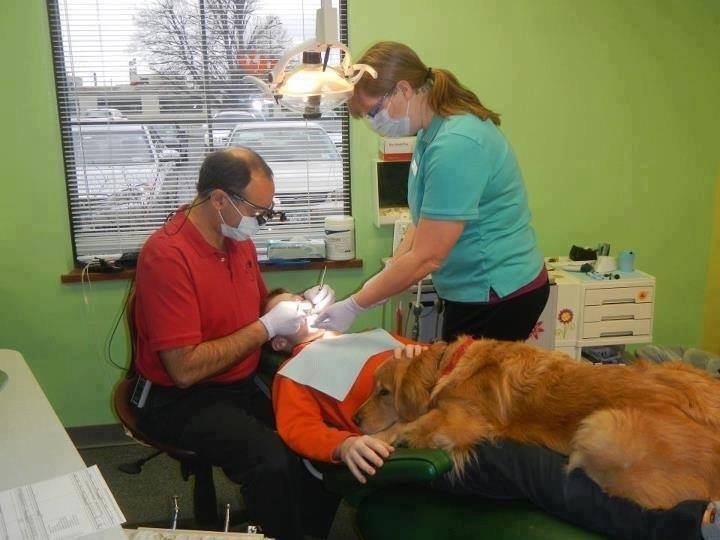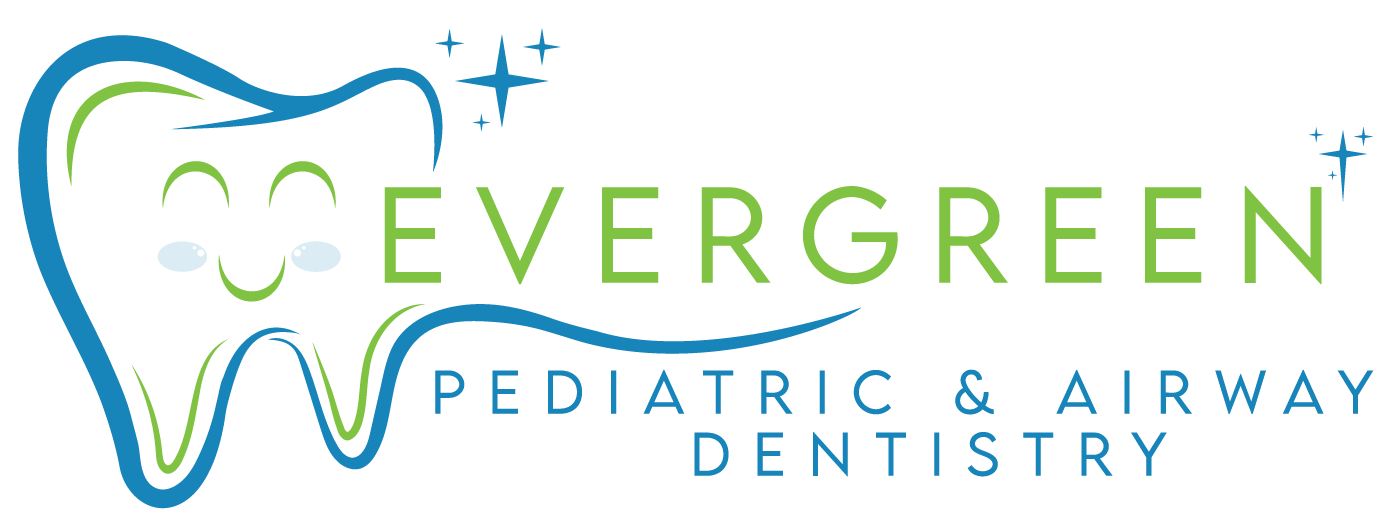Airway Disorders: Causes, Symptoms, and Treatment Options
Airway disorders are a common cause of concern for people of all ages. Whether it is difficulty breathing, chronic coughing, or recurring throat irritation, these issues can greatly affect one’s quality of life. As the airway plays a crucial role in our respiratory system and overall well-being, any disorder that affects its function deserves attention. In this blog post, we will delve into the topic of airway disorders – their causes, symptoms, and treatment options. From exploring common conditions such as asthma and allergies to discussing less-known disorders like laryngomalacia and tracheal stenosis, we aim to provide you with comprehensive information that will help you better understand your condition and make informed decisions about your health. So sit back and read on as we navigate through the world of airway disorders together.

Airway Dentistry
Types of airway disorders
Airway disorders, such as obstructive and restrictive diseases, pose a significant threat to global public health. Obstructive airway diseases, such as chronic obstructive pulmonary disease (COPD), asthma, and cystic fibrosis, are characterized by airway obstruction that makes it difficult to breathe. These disorders are caused by factors such as inflammation and excess mucus production, which narrow the airways and prevent sufficient airflow to the lungs. Patients with obstructive airway diseases often experience symptoms such as shortness of breath, wheezing, and chest tightness. COPD, for instance, is a progressive lung disease characterized by persistent respiratory symptoms, poor airflow, and abnormal airway inflammation. It occurs mainly due to smoking or occupational dust and fumes exposure. Asthma, on the other hand, is caused by the inflammation of the air passages leading to the lungs, which causes them to narrow and produces wheezing, coughing, and breathing difficulty.
Restrictive airway diseases, on the other hand, are characterized by the inability of the lungs to inflate fully due to chest or lung wall stiffness. This generally results in a decrease in overall lung capacity and respiratory function. Common examples of restrictive airway diseases include vocal cord dysfunction, sarcoidosis, and interstitial lung disease (ILD). Vocal cord dysfunction is a disorder characterized by the vocal cords partially or completely obstructing the airway during inhalation. Sarcoidosis, on the other hand, is a disease that causes the immune system to accumulate immune cells in body tissues. This inflammation can often occur in the lungs, resulting in interstitial lung disease (ILD) that leads to fibrosis tissue build-up inside the lungs reducing the lung capacity. These diseases are often caused by environmental exposure, genes, or infections. Overall, early diagnosis and appropriate management of these airway disorders are critical to reducing morbidity and mortality rates, improving patient quality of life, and reducing healthcare costs.
Common symptoms of airway disorders
Airway disorders refer to any medical condition that affects the respiratory system. The airway, comprised of the trachea, bronchi, and lungs, allows for the exchange of oxygen and carbon dioxide within the body. Common symptoms of airway disorders include difficulty breathing, wheezing, coughing, and chest tightness. These symptoms can be caused by a variety of factors, such as allergens, infections, or structural abnormalities within the airway.
Difficulty breathing, also known as dyspnea, is a common symptom of many airway disorders. Dyspnea can occur suddenly or gradually and may be accompanied by a feeling of tightness in the chest. It can be caused by a variety of factors, such as inflammation or narrowing of the airways, respiratory infections, or pulmonary embolism. Wheezing, a high-pitched whistling sound that occurs during breathing, is also a common symptom of airway disorders. Wheezing is caused by the narrowing of the airways and can be a sign of asthma, chronic obstructive pulmonary disease (COPD), or other respiratory conditions. Coughing, another common symptom of airway disorders, may be dry or productive and can be caused by inflammation, infections, or irritants. Chest tightness is a feeling of pressure or squeezing in the chest and can be a symptom of many respiratory conditions, including asthma and COPD. It is sometimes accompanied by shortness of breath and may be relieved by sitting upright or using a bronchodilator.

Airway Disorder Treatment
Causes of different airway disorders
Airway disorders are a group of respiratory conditions characterized by the narrowing and inflammation of airways, making breathing difficult. The causes of these disorders can be broadly categorized into five main factors: genetics, environment, smoking, infection, and acid reflux. Genetics plays a vital role in determining an individual’s susceptibility to airway disorders such as asthma, chronic obstructive pulmonary disease (COPD), and bronchitis. Studies have shown that specific genes are associated with these conditions, making some individuals more prone to developing them than others.
Environmental factors such as air pollution, pollen count, and exposure to allergens can trigger airway disorders in susceptible individuals. Living in areas with significant levels of air pollutants has been associated with an increased risk of developing respiratory conditions. Smoking is another critical risk factor that damages airways and causes chronic inflammation, making it difficult for individuals to breathe. Inhaling tobacco smoke is responsible for many respiratory diseases, including lung cancer, asthma, COPD, and others. Lung infections such as pneumonia and tuberculosis can also cause airway disorders by causing inflammation, narrowing, and scarring of the airways. Lastly, acid reflux is another significant cause of airway disorders, with the stomach’s acidic contents bubbling up into the throat and causing inflammation and narrowing of the airways. In conclusion, an understanding of the various causes of airway disorders is essential for establishing effective prevention and management strategies.
In summary, airway disorders can occur due to various causes such as genetics, environment, smoking, infection, and acid reflux. As medical professionals, we must emphasize the importance of promoting a healthy lifestyle and avoiding known risk factors to help prevent these diseases, including avoiding exposure to air pollution, quitting smoking, staying away from infections, and managing acid reflux through lifestyle changes or medication. With proper prevention strategies in place, individuals can reduce their risk of developing airway disorders and live a healthy life. Early diagnosis and proper treatment are crucial for individuals who already have an airway disorder to prevent complications and manage their symptoms. Knowing the leading causes of airway disorders can help us act proactively and take appropriate measures to improve the health outcomes of our patients.
Diagnosing airway disorders
When it comes to diagnosing airway disorders, healthcare professionals have several tools at their disposal. Spirometry, for example, involves the use of a spirometer to measure lung function. This non-invasive test measures how much air you can inhale and exhale, as well as how quickly you can do so. Through spirometry, doctors can diagnose and monitor conditions such as asthma, chronic obstructive pulmonary disease (COPD), and pulmonary fibrosis.
Chest X-rays and CT scans are also commonly used to diagnose airway disorders. These imaging tests allow doctors to see inside the chest and lungs and can help identify abnormalities such as infections, tumors, or structural issues. Chest X-rays are often used as a first-line test, but more detailed images are often necessary, which is where CT scans come in. CT scans use multiple X-ray images to create a detailed 3D image of the lungs, which can provide more information than a standard X-ray. However, CT scans involve more radiation exposure than chest X-rays and may not be appropriate for everyone.
Bronchoscopy is another diagnostic tool that is used to examine the airways. This test involves the use of a small camera that is inserted through the nose or mouth and down into the lungs. The doctor can then see the inside of the airways and take samples for testing, such as a biopsy. This test is often used to diagnose conditions such as lung cancer, infections, and airway obstructions. While bronchoscopy is more invasive than other diagnostic tests, it is sometimes necessary to provide a more accurate diagnosis. Overall, with the help of these diagnostic tests, healthcare professionals can accurately diagnose airway disorders and provide appropriate treatment.

Airway Problems Diagnosing
Treatment options
Treatment options for chronic obstructive pulmonary disease (COPD) often focus on addressing the underlying causes of the disease and managing symptoms to improve quality of life. Medications such as inhalers and nebulizers are commonly used to help patients breathe more easily by delivering bronchodilators and anti-inflammatory agents directly to the lungs. Lifestyle changes, including quitting smoking, increasing physical activity, and maintaining a healthy diet, can also be effective in managing symptoms and slowing the progression of the disease. In more severe cases, a lung transplant or bullectomy may be recommended to improve lung function and restore quality of life.
Medications are an essential part of COPD treatment, as they help to relieve symptoms and prevent exacerbations. Inhalers are particularly effective in delivering medication directly to the lungs, where it is needed most. Bronchodilators, including beta-agonists and anticholinergics, open up the airways and make it easier to breathe. Inhaled corticosteroids help to reduce inflammation in the lungs, which can improve lung function and reduce the risk of exacerbations. Nebulizers, which deliver medication in a fine mist, may be recommended for patients who have difficulty using inhalers or require larger doses of medication. However, patients need to follow their medication regimen closely and seek medical attention if symptoms worsen or do not improve with treatment.
In addition to medications, lifestyle changes can help to improve lung function and manage COPD symptoms. Quitting smoking is the most important step in reducing the progression of the disease. Exercise and pulmonary rehabilitation can also be highly effective in managing symptoms such as shortness of breath and improving lung function. A healthy diet, including foods rich in antioxidants and omega-3 fatty acids, can help reduce inflammation in the body and improve overall health. For patients with more severe COPD, surgery may be required. A lung transplant, which involves replacing a diseased lung with a healthy one, can improve lung function and quality of life. Bullectomy, which involves removing large air pockets in the lungs that can interfere with breathing, may also be recommended. However, these procedures carry significant risks and are typically reserved for patients with advanced COPD.
Managing symptoms through proper inhaler technique, pulmonary rehab, smoking cessation
A proper inhaler technique is essential for managing symptoms in patients with respiratory problems. When inhalers are used correctly, they can deliver medication directly into the lungs, making them more effective. Proper inhaler technique involves understanding how your inhaler works, cleaning the device regularly and coordinating the inhalation with the release of the medication. It is also essential to know the correct dose recommended by the doctor and follow that dosage strictly. Proper inhaler technique significantly reduces the need for frequent hospitalizations and emergency department visits. Therefore, patients must receive professional guidance on the proper use of inhalers and encourage them to follow those techniques diligently.
Pulmonary rehabilitation is a highly effective program designed to improve lung function and increase tolerance. It is recommended for patients with chronic obstructive pulmonary disease (COPD), which includes Emphysema Chronic Bronchitis, and other lung conditions that can affect breathing. Pulmonary rehabilitation typically includes exercise, breathing techniques, and other individualized strategies that help patients build strength and manage symptoms. It is a form of non-invasive treatment that can significantly improve patient’s quality of life and increase their life expectancy. Pulmonary rehabilitation needs a committed and collaborative effort between the patient, the healthcare provider, and the physical therapist. By engaging in pulmonary rehabilitation, patients can significantly reduce their risk of hospitalization and improve their overall health.
In conclusion, understanding the various types, symptoms, causes, and treatments of airway disorders is crucial for overall respiratory health. With obstructive and restrictive diseases such as COPD, asthma, cystic fibrosis, and vocal cord dysfunction affecting millions of people worldwide, it is important to recognize the warning signs early on to prevent further complications. Genetic predisposition, environmental factors, smoking, infection and acid reflux can all contribute to the development of airway disorders. Accurate diagnosis through spirometry, chest x-ray or CT scans, and bronchoscopy is essential in determining the specific type of disorder and developing an effective treatment plan. While medications such as inhalers and nebulizers are common forms of treatment for managing symptoms, lifestyle changes, and surgery may also be necessary for some individuals. It is important to remember that proper use of inhalers through techniques like correct inhalation timing can greatly improve their effectiveness. Additionally, participating in pulmonary rehabilitation programs and quitting smoking can greatly improve lung function and quality of life. Overall, by being knowledgeable about airway disorders and actively managing symptoms with proper medical guidance, individuals can lead a healthier life with improved breathing capacity.
Evergreen Pediatric Dentistry
https://www.google.com/maps?cid=14720788683151219551
12910 Totem Lake Blvd NE #103, Kirkland, WA 98034, United States
(425) 814-3196
https://evergreenkidsdentist.com/


